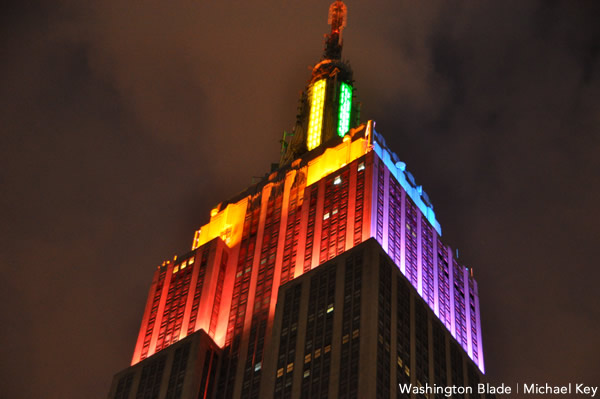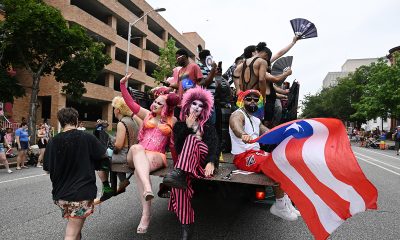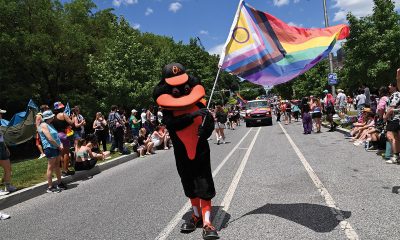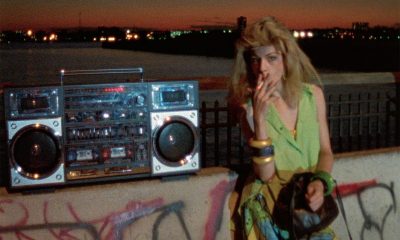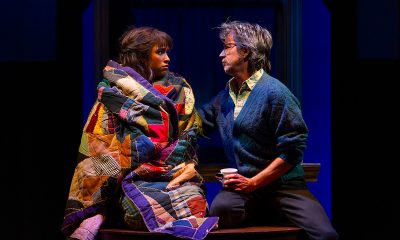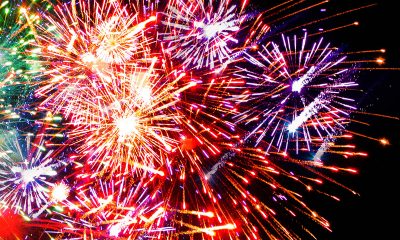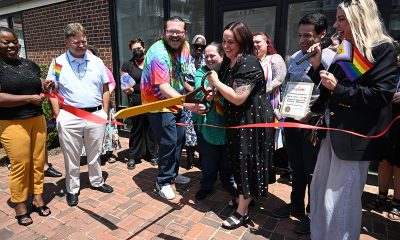Arts & Entertainment
Pride day trips
Baltimore, New York and more among regional June offerings

Capital Pride is far from the only gay Pride event in the region with fabulous festivities and must-see entertainment. Those celebrating the LGBT community can continue the fun by taking road-trips to pride festivals in Baltimore, New York and the Outer Banks, N.C.
STAY ON TOP OF ALL THINGS PRIDE! DOWNLOAD THE DIGITAL PRIDE GUIDE TODAY!
The Baltimore Pride Celebration has been Maryland’s largest LGBT visibility event since 1975. Baltimore’s Pride Parade and Block Party are on June 16 from 4-10 p.m. in the heart of the city’s historic gay neighborhood, Mount Vernon. The Pride Festival on June 17 is held in lakeside Druid Hill Park from 11 a.m. to 6 p.m.
Baltimore Pride attracts roughly 30,000 people annually from all over the Mid-Atlantic. Trevor Ankeny, co-chair of Baltimore Pride, expects an even higher turnout this year.
“I think with the new attractions more people will want to come check them out,” Ankeny says. “We have more activities going on during the day. Before we had a lot of entertainment without many activities.”
One of the new attractions is the Adult Zone, a tent at the Block Party where guests can mingle with adult film stars such as Max Ryder and Pierre Fitch. Dance Dance Revolution! (DDR!) is another new addition at the Block Party. The Pride Festival Family Zone will expand this year, with carnival games brought by Camp Highlight (a summer camp for children of LGBT parents) and arts and crafts activities. Up-and-coming pop artist Neon Hitch is the Block Party’s headlining performer.
“She’s a really good performance artist. She definitely has dance hits right now,” Ankeny says. “I think she’ll really put on a good show. She’s different and unique.”
Neon Hitch is quickly garnering popularity. She recently collaborated with Gym Class Heroes on their hit track “Ass Back Home,” and her delightfully provocative song “F U Betta” went to No. 1 on the Billboard Hot Dance Club Play Charts. She already has developed a strong gay fan base by going on a U.S. gay club tour last year and performing at Las Vegas Pride.
Other Baltimore Pride events include Twilight on the Terrace, a cocktail party benefiting Baltimore Pride on June 15 at Gertrude’s Restaurant at the Baltimore Museum of Art (10 Art Museum Dr. Baltimore, Md.) from 7-11 p.m., and the High Heel Race at 3 p.m. on June 16 (corner of Charles and Read Streets in Baltimore). For more details on Baltimore Pride, visit baltimorepride.org.
Philadelphia and Pittsburgh have their Pride festivals and parades the same weekend as D.C.’s, so hitting those would be tough but they’ve both lined up solid guests. Talk show host Wendy Williams will be in Philly (phillypride.org) and Melissa Etheridge will headline with a 90-minute concert in Pittsburgh (pittsburghpride.org).
New York City Pride, of course, is a hugely popular weeklong celebration of LGBT visibility. The NYC Pride Rally kicks off the week’s festivities on June 16 from 3-6 p.m. at the East River Bandshell. The Rally features motivating speakers and popular performers, with Jai Rodgriguez from Chelsea Lately as this year’s MCs.
The NYC Pride March has been an annual civil rights demonstration free and open to the public since 1970. The march starts on June 24 at noon at 36 St. and 5 Ave. Cyndi Lauper is one of the grand marshals of the event. Following the march is PrideFest, a massive LGBT public street fair with vendors and entertainers on Hudson Street between Abdingdon Square and West 14 Street. PrideFest is from 11 a.m.-7 p.m.
NYC Pride has many other events during the week, finishing with the glamorous Dance on the Pier party on June 24 from 5 p.m. to 2 a.m. at Pier 57 in Hudson River Park. Tickets are $90 and $165 for VIP passes, and all proceeds go to NYC Pride Week events and community organizations. For more details on NYC Pride, visit nycpride.org.
OBX Pridefest is another exciting series of gay pride events from June 13-17 in the Outer Banks, N.C. Although it is much smaller than the pride festivals in Baltimore or New York, there will be plenty of wonderful beachside activities to participate in, such as the Pride and Joy Booze Cruise aboard the Crystal Dawn on June 15. The cruise starts at Pirate’s Cove Marina in Manteo, N.C., at 6 p.m., and features an open bar and DJ.
The OBX Gay Pride Festival is June 16 from noon to 6 p.m. at the First Colony Inn in Nags Head (6720 South Virginia Dare Trail Nags Head, N.C.). The event will have various bands, tons of food, arts and crafts, and a pool party all afternoon. The Pride and Joy Beach Party with DJ Airrick is on the following Sunday, with a sand sculpting contest and Jell-o wrestling right on Nags Head beach behind the First Colony Inn. To find out more on the many other events at OBX Pridefest, visit obxpridefest.com.
Photos
PHOTOS: Independence Day Weekend in Rehoboth
Wicked Green Pool Party, fireworks among festivities
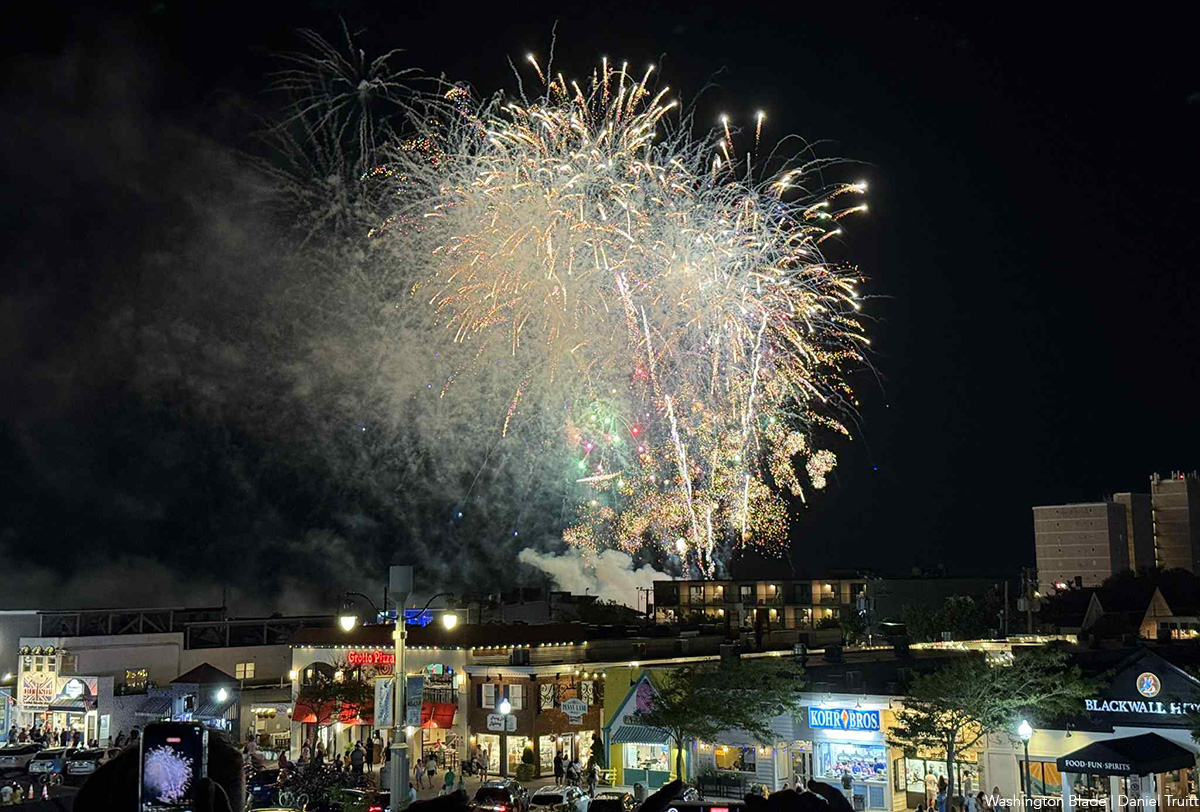
Vacationers and residents alike enjoyed Independence Day Weekend activities in Rehoboth Beach, Del. The Wicked Green Pool Party drew hundreds to the CAMP Rehoboth fundraiser on Saturday. That evening, revelers went to the rooftops to watch the fireworks display.
(Washington Blade photos by Daniel Truitt)
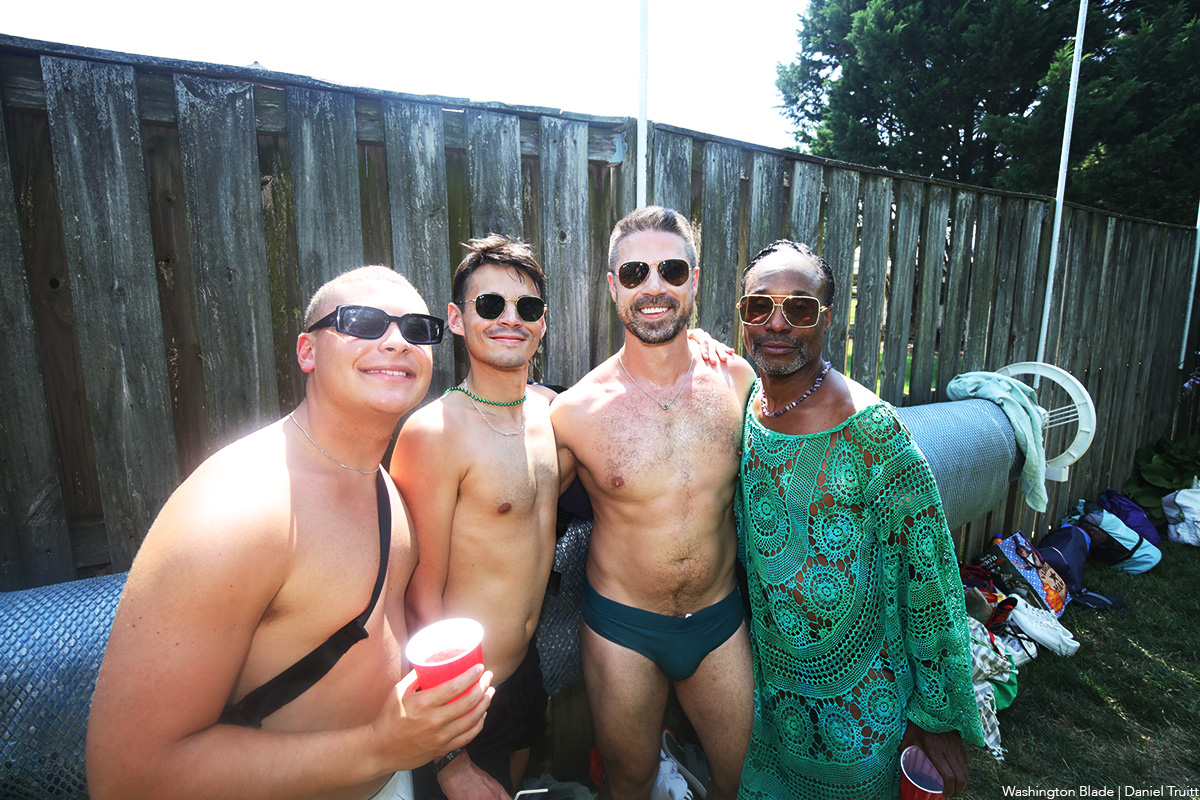

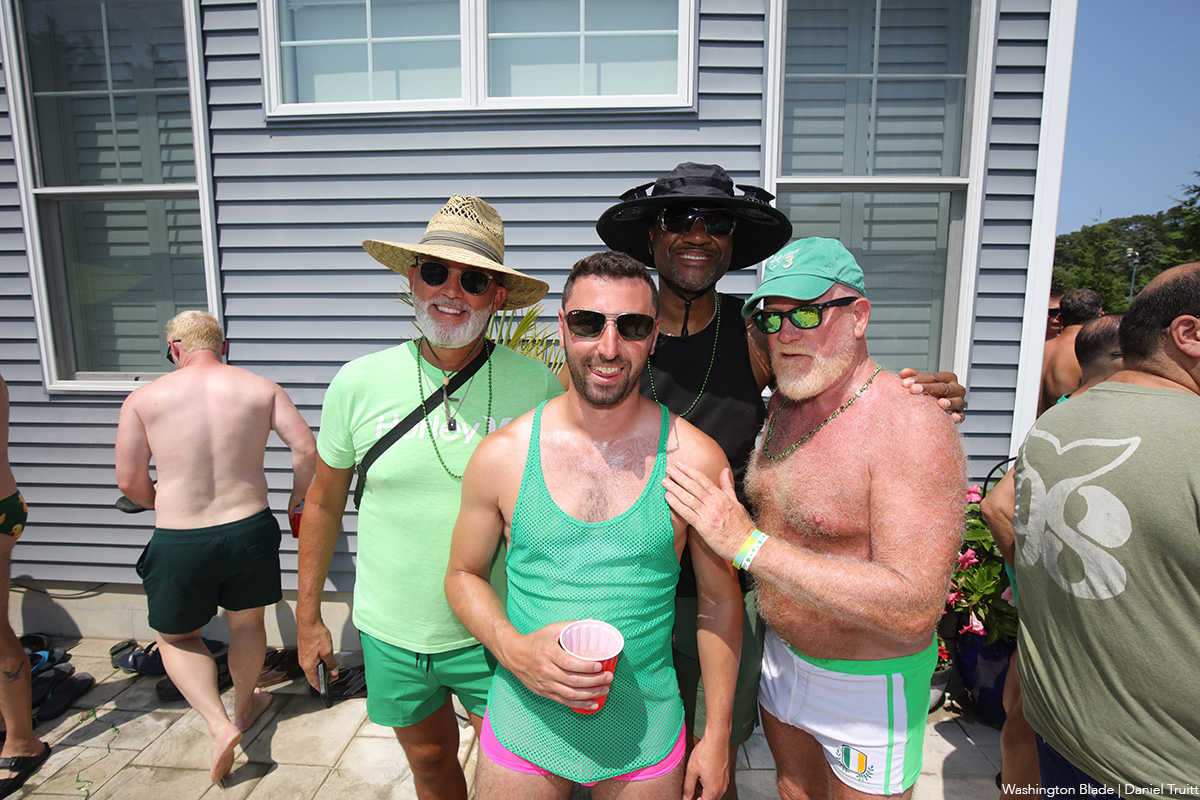
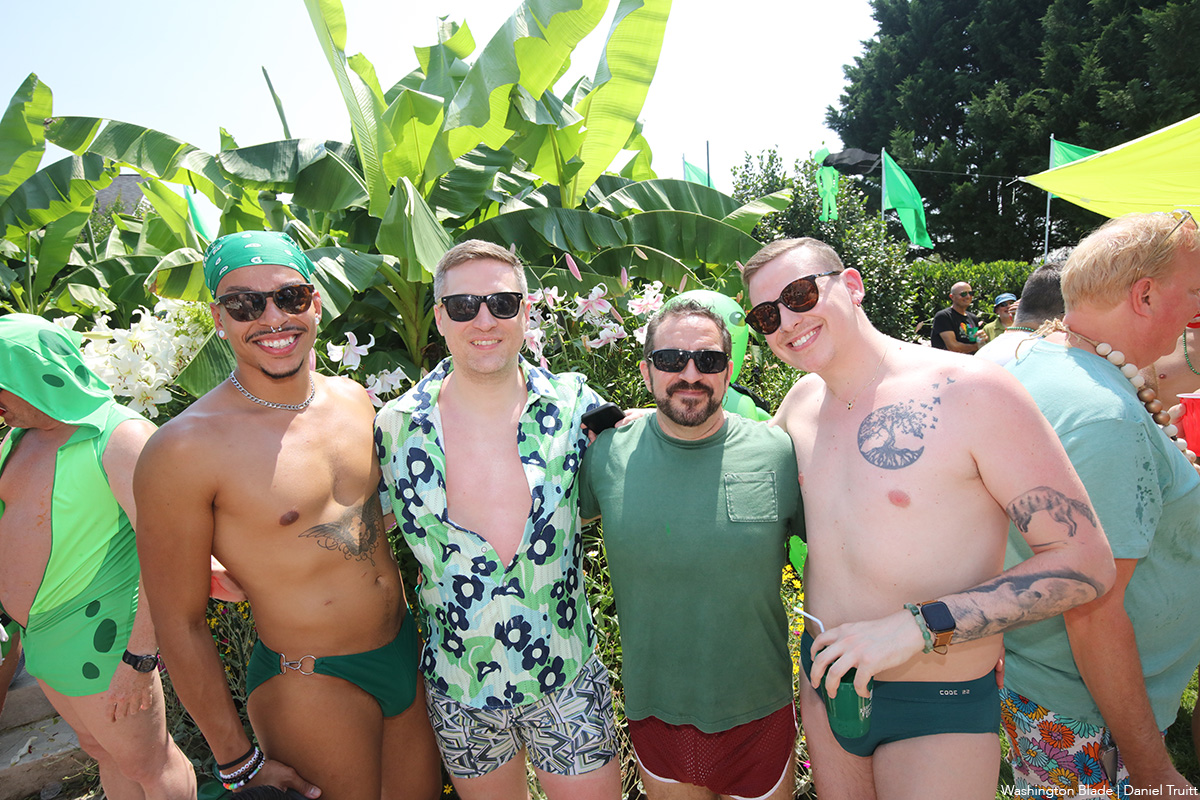
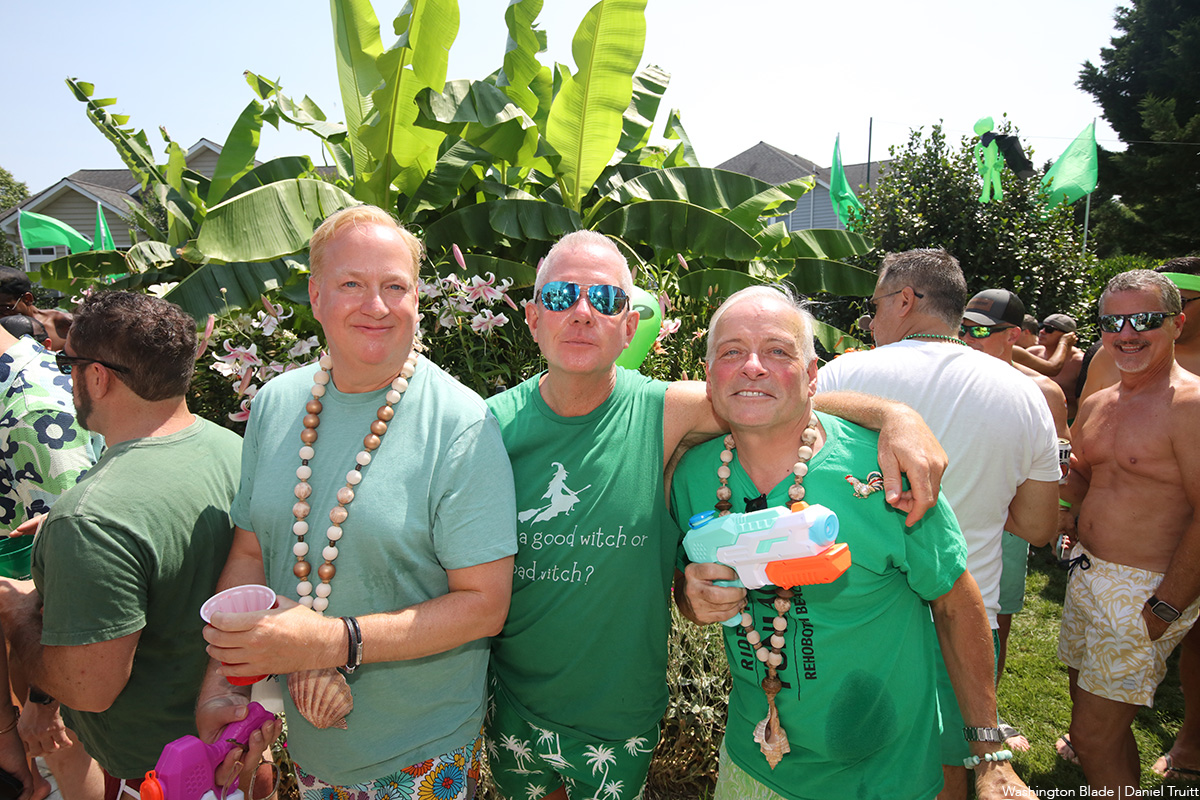
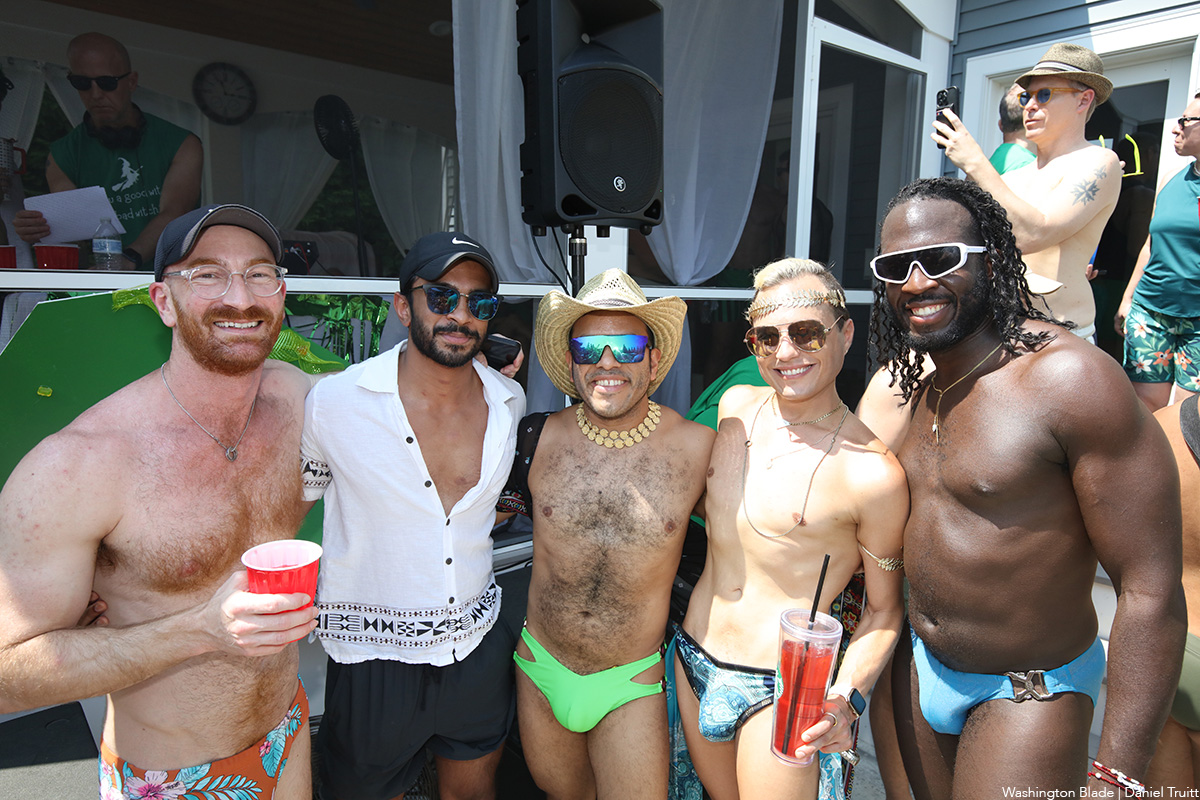
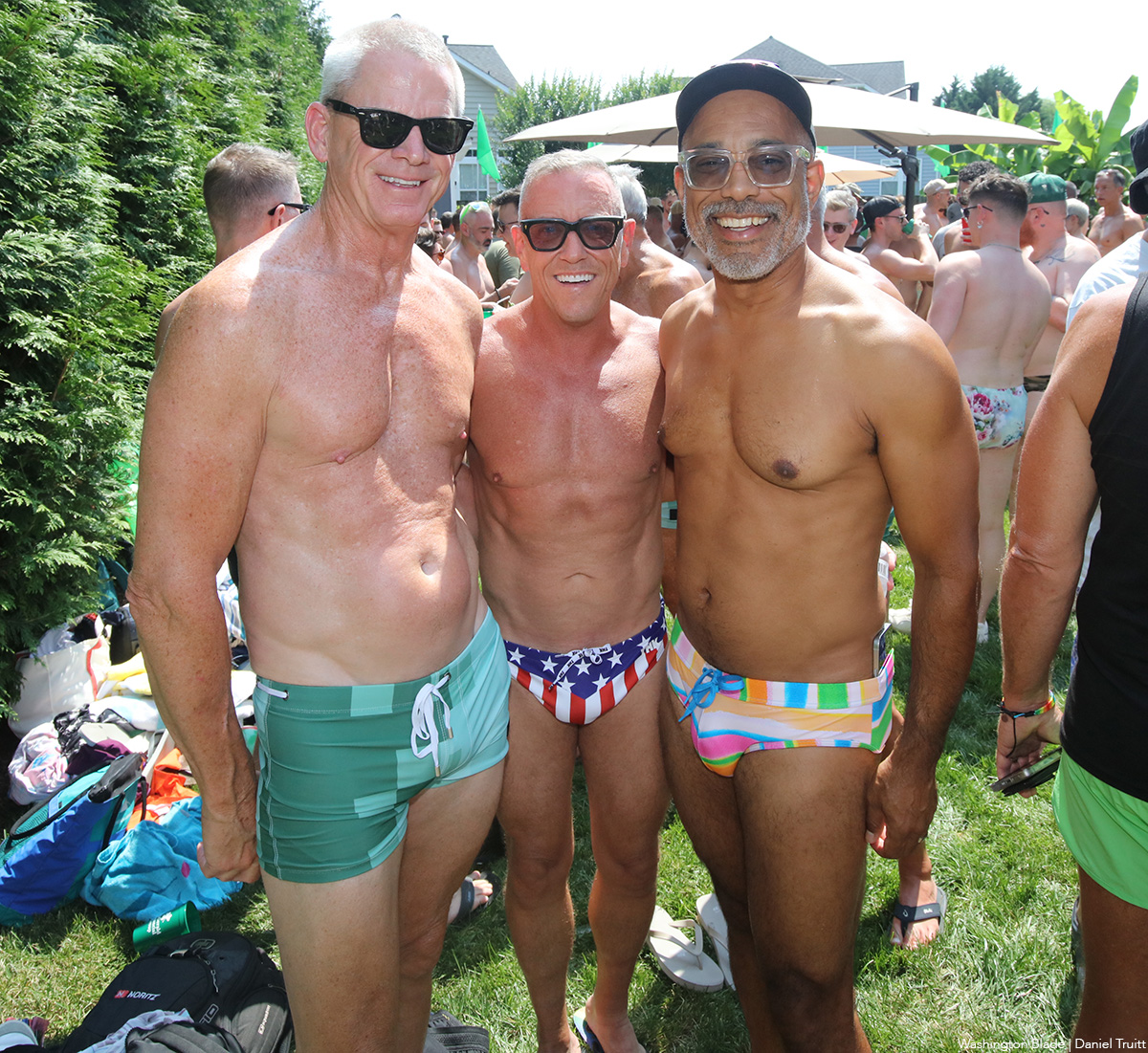
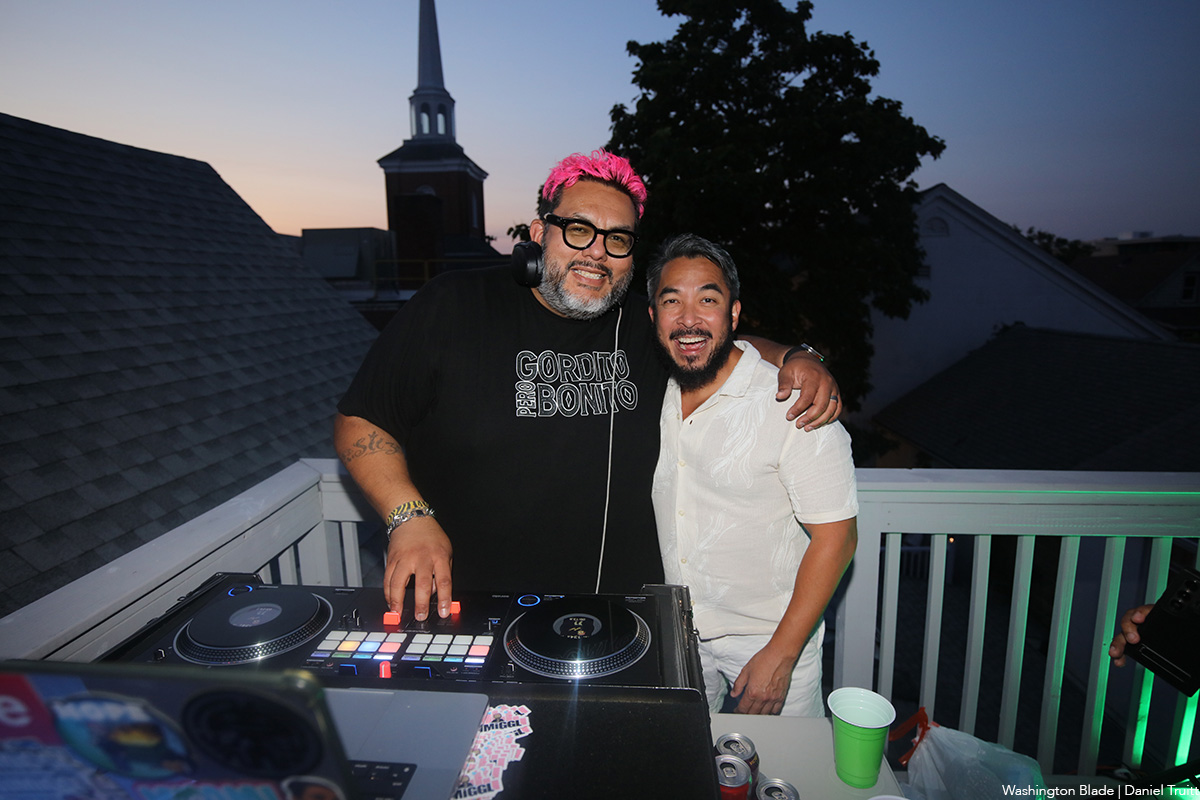

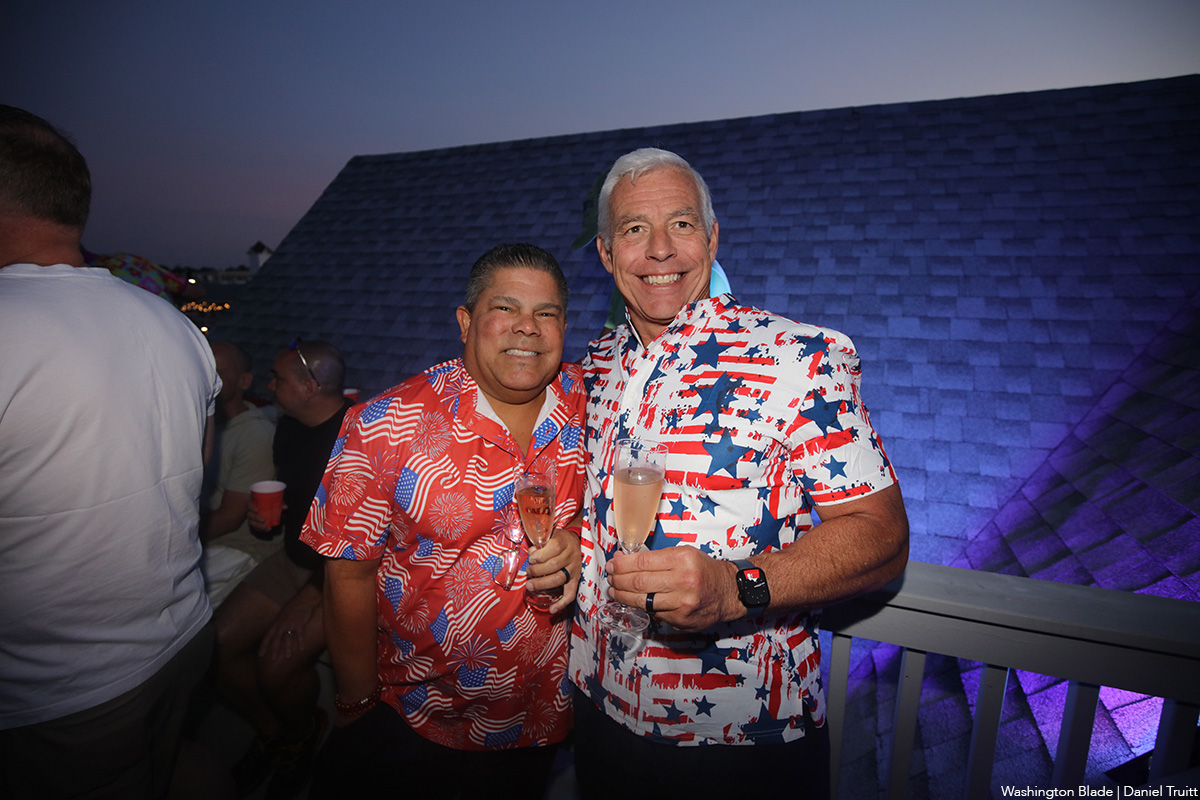
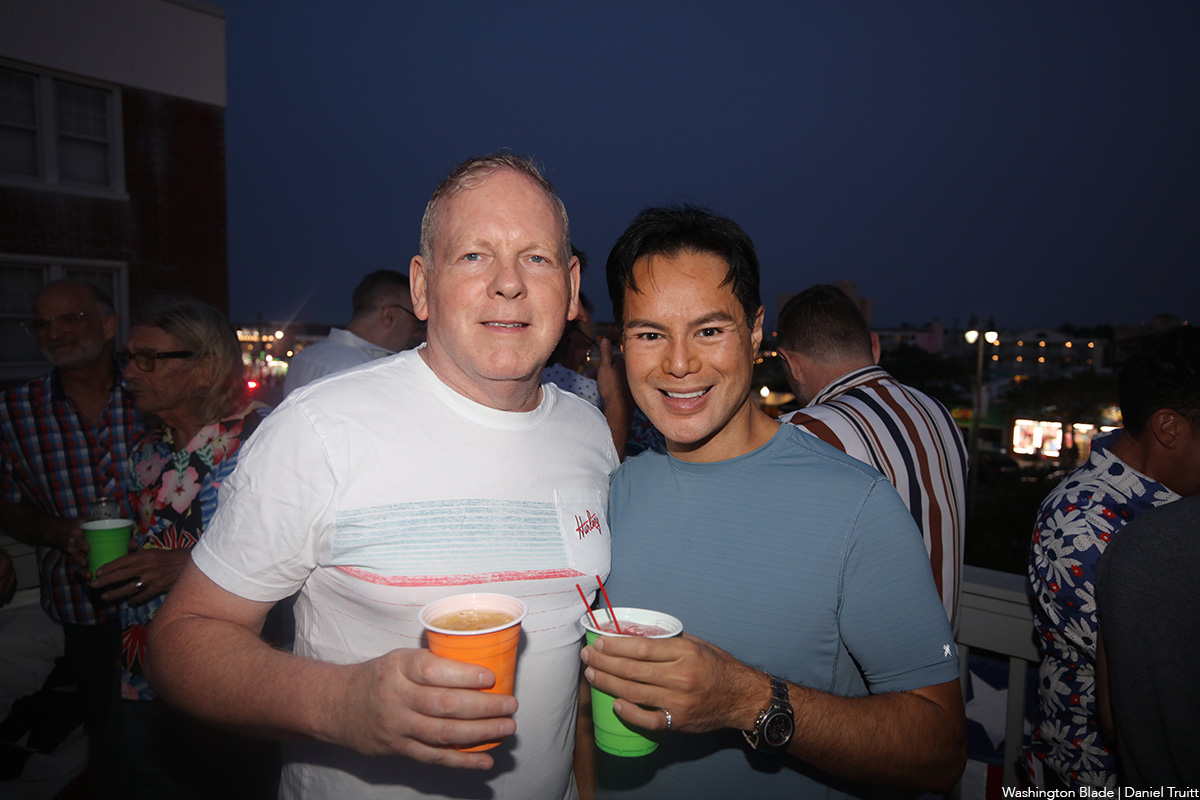
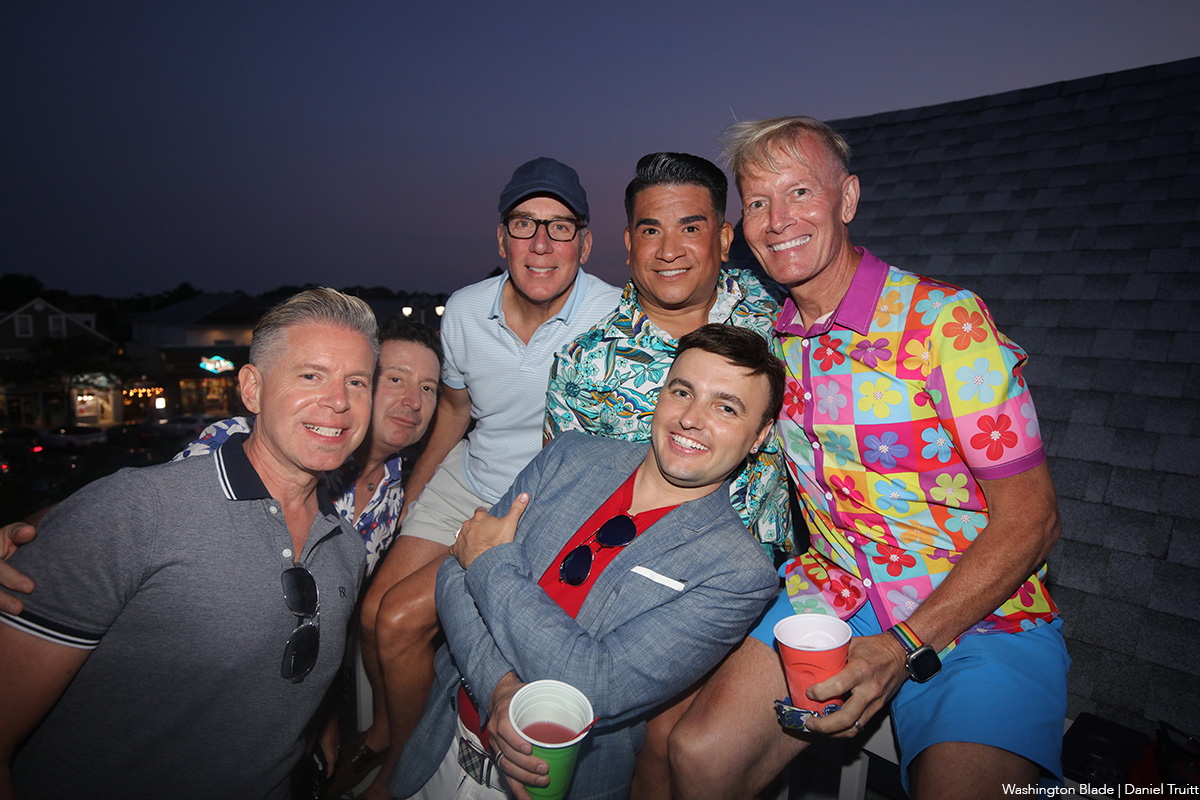
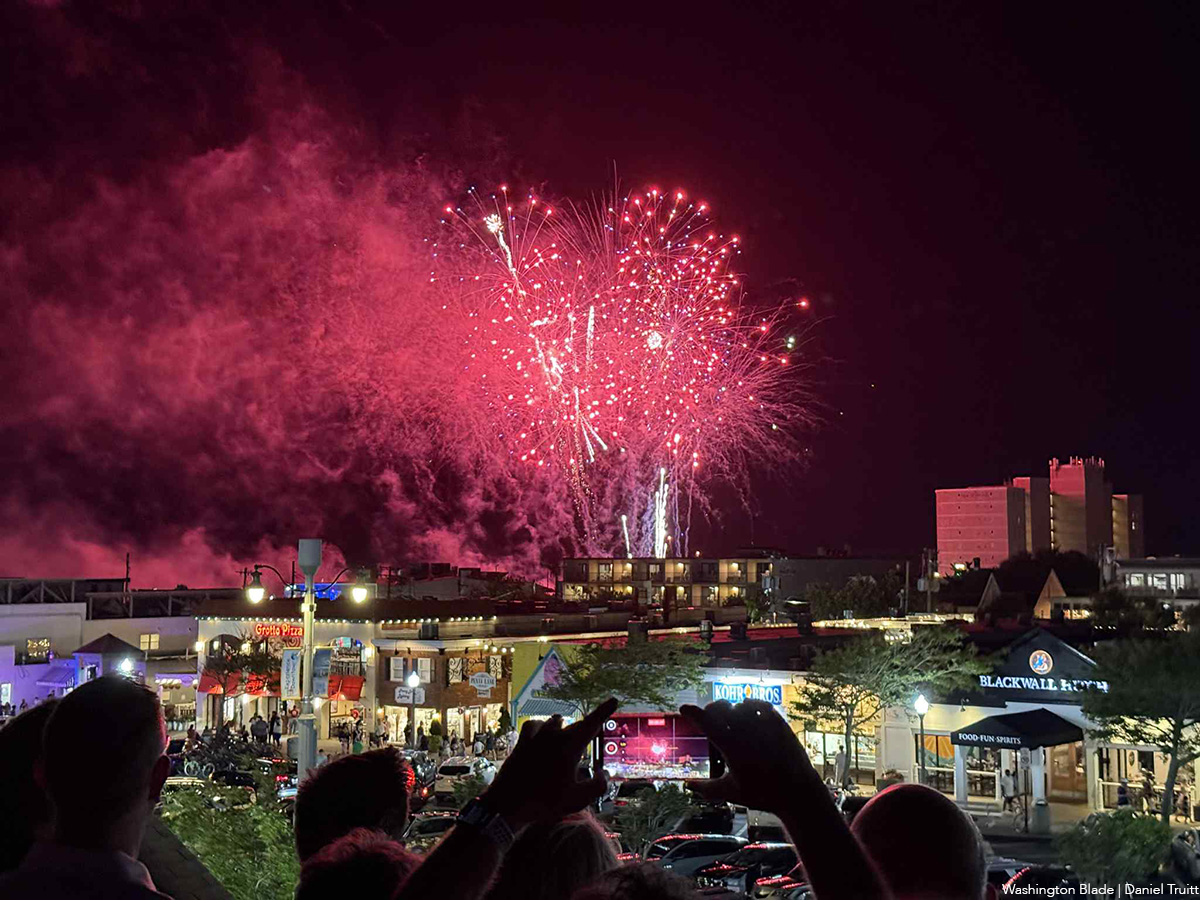
Music & Concerts
Red, White, and Beyoncé: Queen Bey takes Cowboy Carter to D.C. for the Fourth of July
The legendary music icon performed on July 4 and 7 to a nearly sold-out Northwest Stadium.
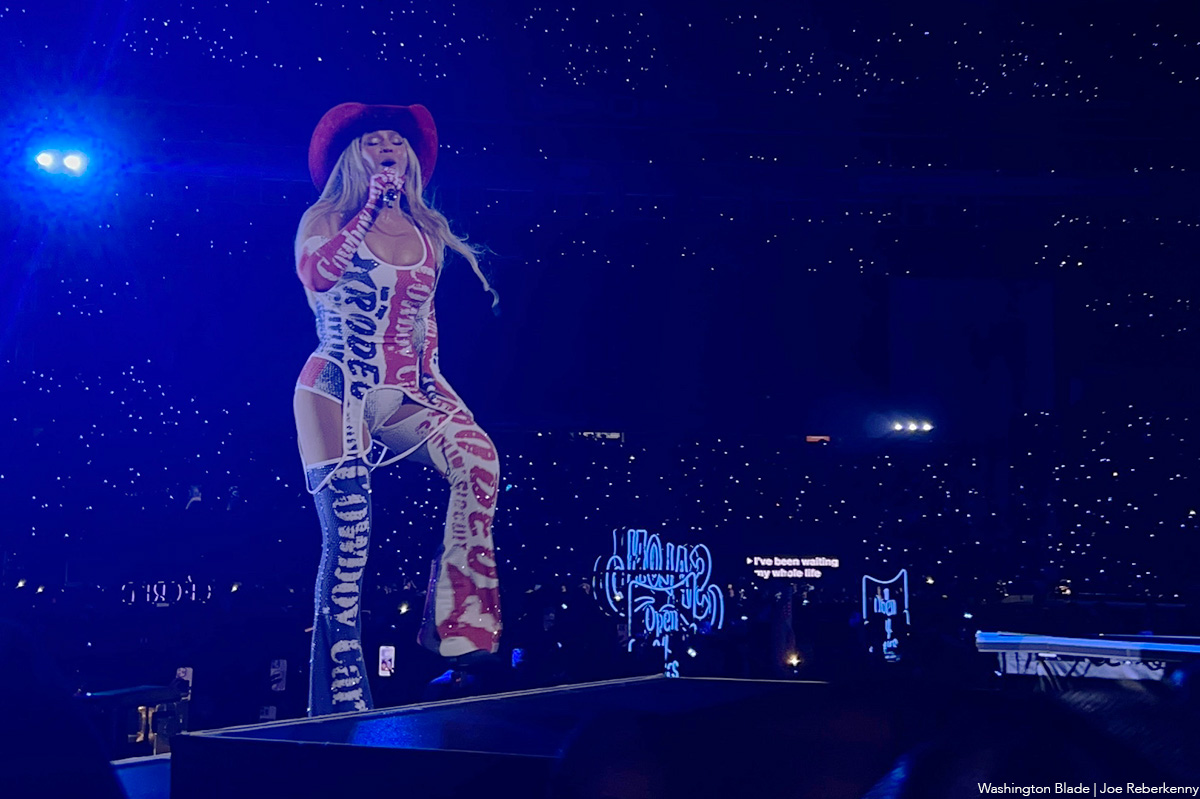
Just in time for Independence Day, Beyoncé lit up Landover’s Commanders Field (formerly FedEx Field) with fireworks and fiery patriotism, bringing her deeply moving and genre-defying “Cowboy Carter” tour to the Washington, D.C. area.
The tour, which takes the global icon across nine cities in support of her chart-topping and Grammy-winning country album “Cowboy Carter,” landed in Prince George’s County, Maryland, over the Fourth of July weekend. From the moment Beyoncé stepped on stage, it was clear this was more than just a concert — it was a reclamation.
Drawing from classic Americana, sharp political commentary, and a reimagined vision of country music, the show served as a powerful reminder of how Black Americans — especially Black women — have long been overlooked in spaces they helped create. “Cowboy Carter” released in March 2024, is the second act in Beyoncé’s genre-traversing trilogy. With it, she became the first Black woman to win a Grammy for Best Country Album and also took home the coveted Album of the Year.
The record examines the Black American experience through the lens of country music, grappling with the tension between the mythology of the American Dream and the lived realities of those historically excluded from it. That theme comes alive in the show’s opening number, “American Requiem,” where Beyoncé sings:
“Said I wouldn’t saddle up, but
If that ain’t country, tell me, what is?
Plant my bare feet on solid ground for years
They don’t, don’t know how hard I had to fight for this
When I sing my song…”
Throughout the performance, Beyoncé incorporated arresting visuals: Black cowboys on horseback, vintage American iconography, and Fox News clips criticizing her genre shift — all woven together with voiceovers from country legends like Dolly Parton and Willie Nelson. The result was a multimedia masterclass in storytelling and subversion.
The “Cowboy Carter” tour has been a social media sensation for weeks, with fans scrambling for tickets, curating elaborate “cowboy couture” outfits, and tailgating under the summer sun. At Commanders Field, thousands waited in long lines for exclusive merch and even longer ones to enter the stadium — a pilgrimage that, for many, felt more like attending church than a concert.
One group out in full force for the concert was Black queer men — some rocking “denim on denim on denim on denim,” while others opted for more polished Cowboy Couture looks. The celebration of Black identity within Americana was ever-present, making the concert feel like the world’s biggest gay country-western club.
A standout moment of the night was the appearance of Beyoncé’s 13-year-old daughter, Blue Ivy Carter. Commanding the stage with poise and power, she matched the intensity and choreography of her mother and the professional dancers — a remarkable feat for someone her age and a clear sign that the Carter legacy continues to shine.
It’s been nearly two decades since Beyoncé and Destiny’s Child parted ways, and since then, she’s more than lived up to her title as the voice of a generation. With “Cowboy Carter,” she’s not just making music — she’s rewriting history and reclaiming the space Black artists have always deserved in the country canon.
a&e features
From Prohibition to Pride: Queering the District podcast reveals local LGBTQ history
The new podcast explores the hidden history and enduring impact of queer spaces in Washington, D.C.
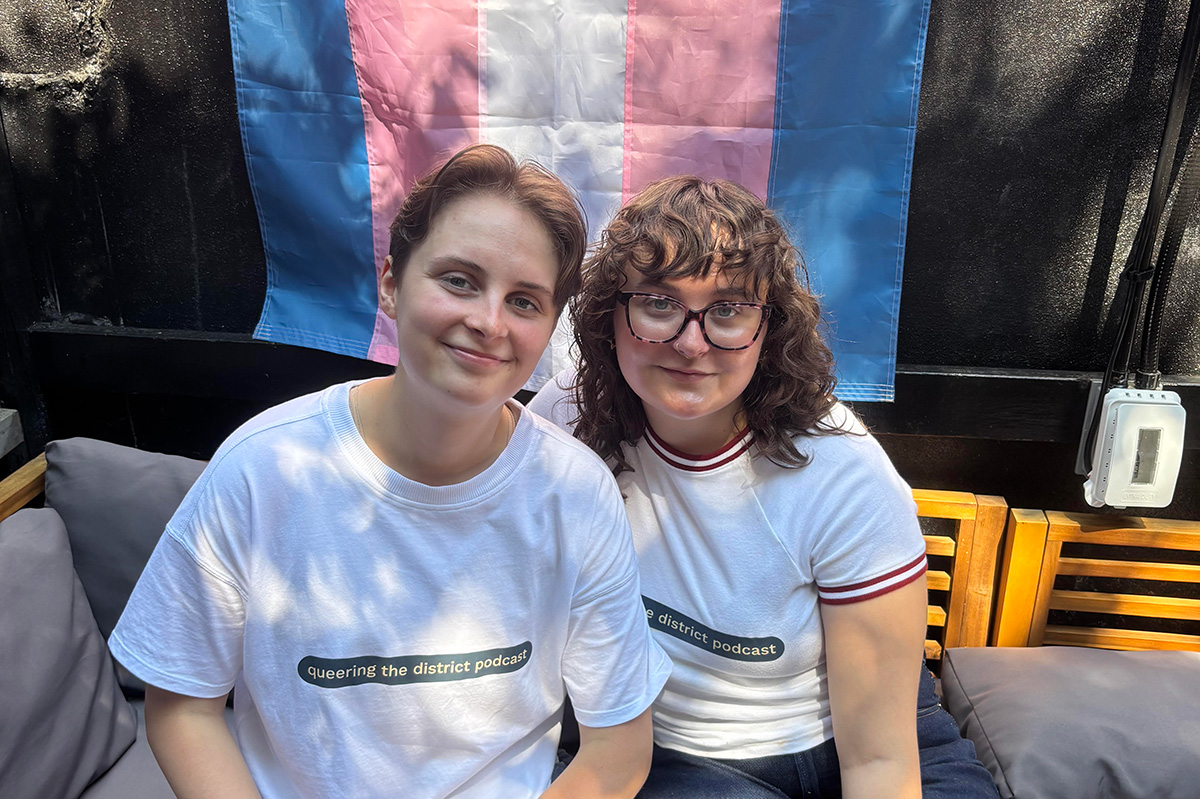
On June 25, as Pride month inched toward its end, three queer creators launched an ambitious project to honor the spaces that built D.C.’s LGBTQ community—and connect them to today’s queer life. The first episode of their podcast, Queering the District, hit streaming platforms that day, aiming to spotlight what host and co-creator Abby Stuckrath calls “third places”: bars, clubs, and gathering spots that have served as hubs for queer life across the city.
Each episode of the 10-part series delves into a different piece of D.C.’s queer past—from landmark clubs to untold personal stories—told through the voices of drag legends, activists, DJs, historians, and patrons who lived it. The show also threads together personal experiences from today’s community, bringing the listener on an auditory journey from Prohibition-era speakeasies to contemporary nights out at places like As You Are or Saints & Sinners.
Abby Stuckrath, alongside her sibling Ellie Stuckrath, and producer Mads Reagan, make up the podcast’s creative team. A recent journalism graduate of American University, Abby told the Blade that her passion for queer storytelling began during college—and that D.C. itself played a defining role in shaping her queer identity.
“I went to American University. I graduated last year and studied journalism. When I was in school, I always wanted to focus on queer stories – especially in D.C., because I’m from Denver, Colorado, I’ve never lived in a place like this before. D.C. has always just kind of been a place I call home when it comes to my queer identity.”
But breaking into the media to tell those stories wasn’t easy. Stuckrath quickly learned that editorial support—and funding—for queer-focused projects is limited. So she decided to do it her own way.
“I kind of found out that if you want to tell stories, you kind of have to do it on your own– especially when it comes to queer stories. There’s not a lot of people begging for us to talk about queer people and to pay you for it. So I was like, ‘Okay, let’s just do it on my own.’”
The idea for the podcast first took root in conversations with Ellie, Abby’s sibling and biggest supporter. Ellie had also moved to D.C. to find more space to explore and express their queer and gender identities. Together, the two began shaping a vision that would combine storytelling, sound design, and grassroots community input.
“I was like, ‘I don’t know what exactly I want to do yet, but I want it to be queer, and I want it to be about D.C., and it’s going to be called Queering the District, and we’re going to find out what that means.’ And Ellie is my biggest supporter, and my best friend. And they were like, ‘Hell yeah. Like, let’s do this.’ And so we decided to just do it together.”
The name stuck—and so did the mission. The team began researching queer D.C. history and found a city overflowing with stories that had rarely been documented, especially in mainstream archives.
“We started looking up the history of queer culture in D.C., and it kind of just clicked from there,” Stuckrath said. “I did not know anything about how rich our history is in the city until one Google search, and then I just kept learning more and more. I was kind of pissed because I studied gender studies in school in D.C. and didn’t learn shit about this.”
Season one focuses on the role of third places—non-work, non-home spaces where queer people could gather, exist fully, and build community.
“Third places have always been the epicenter of queer life… places outside of just your own personal home, because sometimes that isn’t a safe place. And of course, the work most commonly in the past and still today, isn’t a safe place for queer people to be full of themselves. So like, bars were the first place for queer people to really thrive and meet each other.”
To make the show participatory, Queering the District includes a twist: a voicemail line where anyone can call in and share a memory or question. The team calls the phone “Fifi”—a nod to the kind of retro guestbooks often used at weddings, but reimagined for queer nightlife and history.
“We wanted to find a way for people to share their stories with us anonymously… so even though we start in Prohibition, we wanted to connect it to now—like, those people who were singing jazz to each other in a white queer bar are connected to you singing karaoke on a Sunday night at your favorite gay bar. We’re all interconnected by this third place of queer bars in D.C.”
Those connections are emotional as well as historical. While building the series, one realization hit Stuckrath particularly hard: the immense loss of queer spaces in D.C., especially in neighborhoods that have since been heavily redeveloped.
“Every time I go to a Nats game, I think about, well, this just replaced five gay bars that used to be here. It used to be the home of Ziegfeld’s… Tracks, which was almost 2,000 square feet, with a volleyball court in the back, a fire pit, and iconic light show. I just didn’t know that we had that, and it made me sad for the queer elders that are in our city now who walk the streets and don’t see all those places they used to call home.”
That sense of loss—alongside the joy and resilience of queer community—is what the show aims to capture. As the podcast continues, Abby hopes it serves as both a celebration and an educational tool, especially for young LGBTQ people arriving in D.C. without realizing the queer foundations they’re walking on.
“D.C. is a unique city, and specifically young queer people who are hoping to move to the city—to know that you’ve got to know your history to be here. I hope this serves as an easier way for you to consume and learn about queer history, because queer history defines how we move in life.”
And for all the voices still left out, Abby is clear: this podcast is an open door, not a final word.
“This is a perfectly imperfect podcast. We should just be a starting point. We shouldn’t be the ending point.”
New episodes of Queering the District drop every Wednesday on all major platforms.

